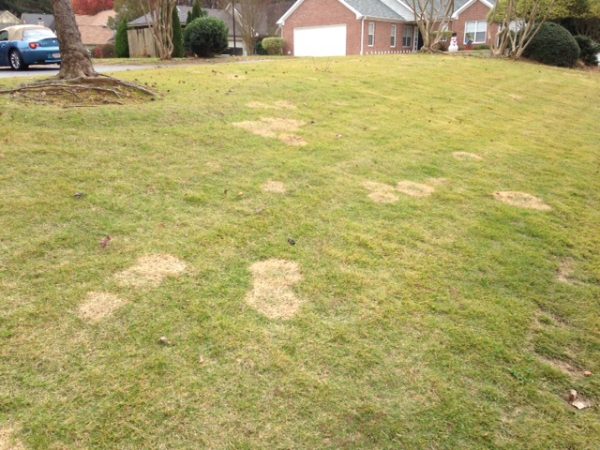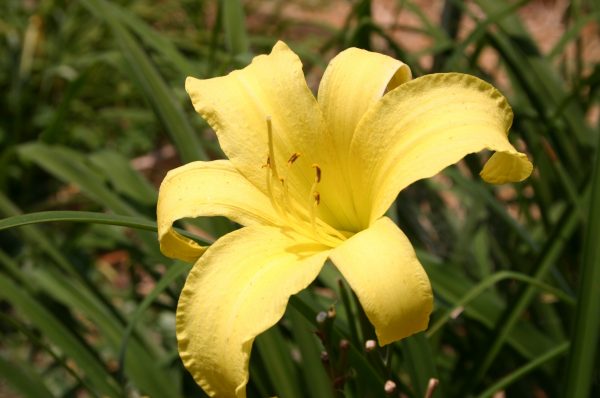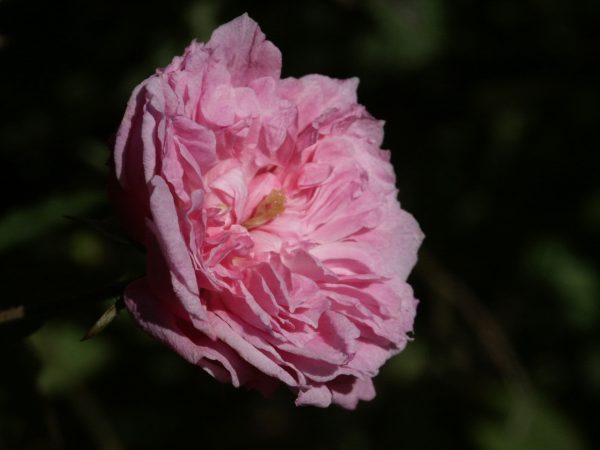Bermuda – Varieties
From common bermudagrass, breeders have selected plants that stay low and produce few seedheads. ‘Tifton 419’ and ‘Tifton 94’ are sterile hybrids, available only as sod. They produce no viable seed but a sprig will cover a 12-inch by 12-inch square in only one summer. Common bermudagrass, however, is a frequent uninvited guest in landscape flower beds!
Common bermudagrass (seed)
• Lighter green than hybrid bermudagrass.
• Leaves are coarser than hybrid bermudagrass
• Seedheads pop up quickly after mowing
• Invades flower beds rapidly
‘Riviera’ and ‘Princess 77’ are introductions of improved bermudagrass seed. They tend to be deeper green than common bermudagrass and are reputed to resemble a sodded bermudagrass lawn.
Developed by Seed Research of Oregon, ‘Riviera’ has multiclonal parents. Athens Seed Co. (706-769-2712) is a distributor for Seed Research. Former Extension agent Don Morris says he has planted ‘Princess 77’ Bermudagrass with great success. Available from www.seedland.com, this seed is pricey: $25 per pound, but Don says it has dense, low growth similar to Tifton 419 sod.
Tifway (Tifton 419) Bermudagrass (sod)
• Dark green, medium-fine texture
• Excellent drought tolerance
Tifsport (Tifton 94) Bermudagrass (sod)
• Emerald green; keeps dark color later in fall
• Low-growing, spreads rapidly, resists traffic injury
Common Bermudagrass (Cynodon dactylon). Common bermudagrass is drought resistant, grows on many soils, and it makes a good turf if fertilized and mowed right. Common bermudagrass produces many unsightly seedheads, but in spite of this fault, it is frequently used on home lawns due to the ease and economy of establishment. Common bermuda may be planted from either seed or sprigs and with intensive management will provide a high quality turf. However, the newer hybrid bermudas are generally far superior.
Hybrid Bermudagrasses. Compared with common bermuda, these grasses have more disease resistance, greater turf density, better weed resistance, fewer seedheads, finer and softer texture and more favorable color. They also produce no viable seed and must be planted by vegetative means.
The hybrids also require more intensive maintenance for best appearance. Frequent fertilization and close mowing, edging, and dethatching are needed to keep them attractive.
All of the improved bermudagrasses described here have been developed and released cooperatively by the University of Georgia Coastal Plain Experiment Station and U.S. Department of Agriculture. They are products of the grass breeding program of Dr. Glenn W. Burton, Principal Geneticist.
Tifway (Tifton 419) Bermudagrass. Tifway has several outstanding features that make it an ideal turf for lawns and golf fairways and tees. It has a dark green color and stiffer leaves than Tifgreen. Tifway is more frost resistant than other bermudagrasses. Therefore, it will usually remain growing and green longer in the fall and will develop color earlier in the spring. This trait, along with its ruggedness, has led to its use on football fields.
Tifway II Bermudagrass is an improved mutant of Tifway. Tifway II looks like Tifway and has the same desirable characteristics, but makes a denser turf, is more frost tolerant, often greens up earlier in the spring and provides slightly better turf quality.
Tifgreen (Tifton 328) Bermudagrass. Tifgreen is a low-growing rapidly spreading grass. It is relatively disease resistant and makes a dense, weed-resistant turf when properly managed. Its fine texture and soft, green leaves are largely responsible for its excellence as a putting green on golf courses.
Tifdwarf Bermudagrass. This hybrid is thought to be a vegetative mutant from the original Tifgreen nursery at Tifton. Tifdwarf, as the name implies, is a very short grass with tiny leaves that hug the ground very closely. It has softer leaves and fewer seedheads than Tifgreen. These characteristics contribute to its use on golf greens and make it less desirable than the other hybrids for lawn use.















